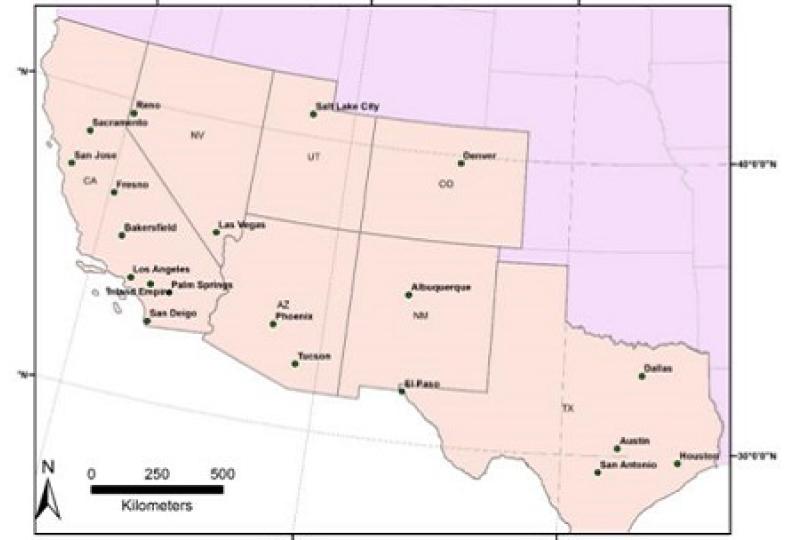Fellow Story
Wheeler co-authors study on unequal burden of rising temperatures in Southwestern cities
Acres of asphalt parking lots, unshaded roads, dense apartment complexes and neighborhoods with few parks have taken their toll on the poor. As climate change accelerates, low-income districts in the Southwestern United States are 4 to 7 degrees hotter in Fahrenheit — on average — than wealthy neighborhoods in the same metro regions, University of California, Davis, researchers have found in a new analysis.
This study, co-authored by Switzer Fellow Dr. Stephen Wheeler, provides the most detailed mapping yet of how summer temperatures in 20 urban centers in California, Nevada, Utah, Arizona, Colorado, New Mexico and Texas affected different neighborhoods between 2018 and 2020. The researchers found even greater heat disparities in California than in other states. The largest disparities showed up in the Riverside and San Bernardino County urban areas.
The unequal impact on Latino communities was especially apparent, the authors said. In Los Angeles on a hot summer day, for example, the most heavily Latino neighborhoods were 6.7 degrees hotter than the least Latino neighborhoods.
“This study provides strong new evidence of climate impact disparities affecting disadvantaged communities, and of the need for proactive steps to reduce those risks,” said the study’s lead author, John Dialesandro, a doctoral student in geography in the Department of Human Ecology.
Read more
Dialesandro, John; Brazil, Noli; Wheeler, Stephen; Abunnasr, Yaser. 2021. "Dimensions of Thermal Inequity: Neighborhood Social Demographics and Urban Heat in the Southwestern U.S." Int. J. Environ. Res. Public Health 18, no. 3: 941. https://doi.org/10.3390/ijerph18030941
